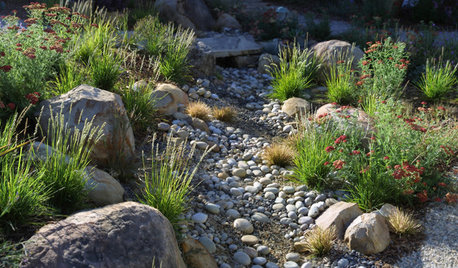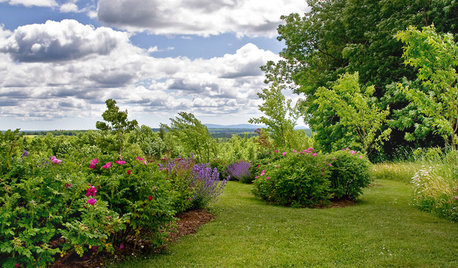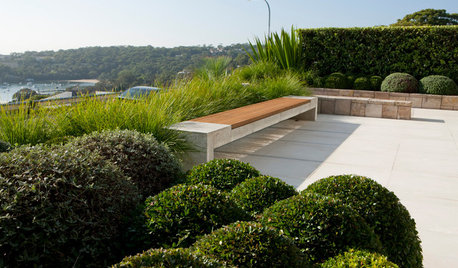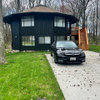Mulch and Fabric
clarksnack
11 years ago
Related Stories

GARDENING GUIDESHow to Pick a Mulch — and Why Your Soil Wants It
There's more to topdressing than shredded wood. Learn about mulch types, costs and design considerations here
Full Story
GARDENING GUIDESGarden Myths to Debunk as You Dig This Fall and Rest Over Winter
Termites hate wood mulch, don’t amend soil for trees, avoid gravel in planters — and more nuggets of garden wisdom
Full Story
LANDSCAPE DESIGNHow to Design Your Landscape to Slow Down Water
Putting the brakes on stormwater runoff is the first step in sustainable water design
Full Story
LANDSCAPE DESIGNYour Mini Guide to Great Garden Edges
Get the scoop on trenches to the skinny on bender board, to help keep your garden beds as tidy as you like
Full Story
GARDENING GUIDESLush, Foodie Abundance in a Small Urban Garden
This modest backyard garden provides its owner with fruit and vegetables all year round, thanks to an innovative low-maintenance approach
Full Story
FALL GARDENING5 Ways to Put Fall Leaves to Work in Your Garden
Improve your soil and yard the organic way with a valuable garden booster that grows on trees
Full Story
SAVING WATERHouzz Call: Are You Letting Go of Your Lawn?
Many facing a drought are swapping turf for less thirsty plantings. If you’re one of them, we’d like to hear about it
Full Story
LANDSCAPE DESIGNHow to Design a Coast-Loving Garden That Lasts
Good looks and longevity go hand in hand with these plants, materials and colors to make your coastal landscape easy-breezy
Full Story
GARDENING GUIDES7 Ecofriendly Gardening Ideas That Also Cut Chore Time
Spend less time weeding, less money watering and more moments just sitting back and enjoying your healthy garden
Full Story
LANDSCAPE DESIGNGet Along With Less Lawn — Ideas to Save Water and Effort
Ditch the mower and lower your water bill while creating a feast for the eyes with diverse plantings and gathering places
Full StorySponsored
Most Skilled Home Improvement Specialists in Franklin County
More Discussions










woodyoak zone 5 southern Ont., Canada
Yardvaark
Related Professionals
Port Royal Landscape Architects & Landscape Designers · Allentown Landscape Contractors · Bethel Park Landscape Contractors · Brookline Landscape Contractors · Golden Gate Landscape Contractors · Longmont Landscape Contractors · Vadnais Heights Landscape Contractors · Cave Spring Decks, Patios & Outdoor Enclosures · Fredonia Decks, Patios & Outdoor Enclosures · Justice Decks, Patios & Outdoor Enclosures · Miami Decks, Patios & Outdoor Enclosures · Minneapolis Decks, Patios & Outdoor Enclosures · Provo Decks, Patios & Outdoor Enclosures · Quincy Decks, Patios & Outdoor Enclosures · Rancho Cordova Swimming Pool BuildersclarksnackOriginal Author
gardengal48 (PNW Z8/9)
tanowicki
patty_cakes
Yardvaark
tanowicki
gardengal48 (PNW Z8/9)
clarksnackOriginal Author
Yardvaark
tanowicki
clarksnackOriginal Author
deviant-deziner
gardengal48 (PNW Z8/9)
Yardvaark
Yardvaark
tanowicki